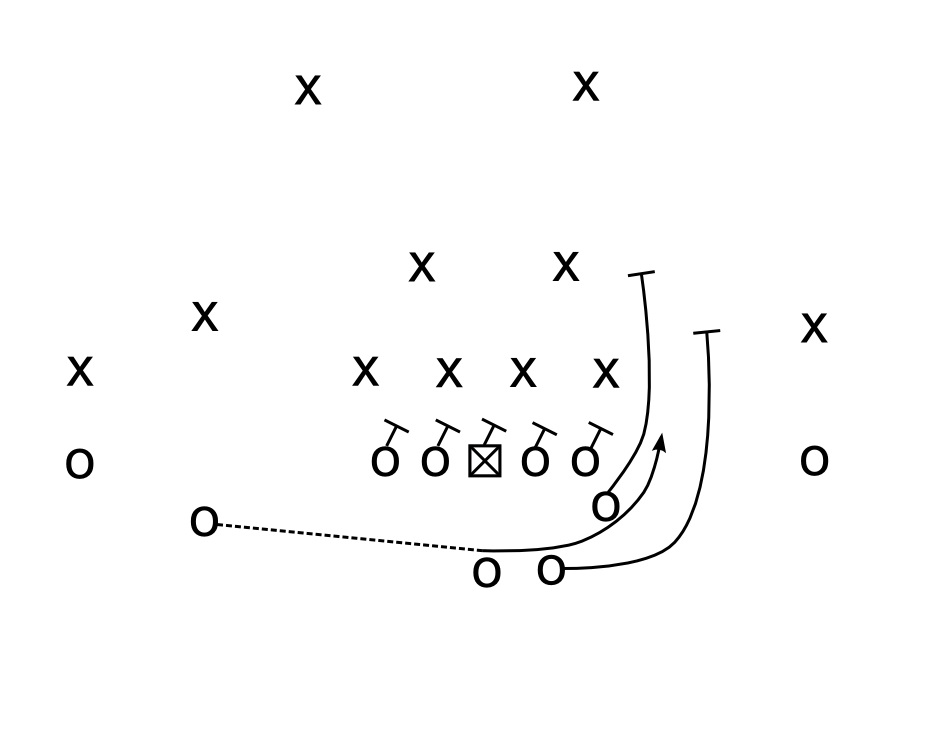
In 2019, Tre Turner and Tayvion Robinson averaged a shade over ten yards per carry on jet sweeps. Much like Frankenstein’s monster, Virginia Tech’s jet sweep plays are amalgamations that combine old and new ways of thinking. It is also like the Creature in that it has imperfections—muck like Boris Karloff’s famous portrayal of the Monster, the play isn’t quite a seamless* construct.
Despite just how often the jet sweep gained critical yards, it became a bit of shorthand for criticizing the Hokie offense and its coaches. The jet sweep was a “crutch” for an offense that failed at executing routine plays. I think this is unfair. The curse of Frankenstein’s monster is that it is misunderstood, and I think the same can be said for the jet sweep.

Sweeps are all about threatening the defense’s edges. When the ball carrier on the sweep is a receiver running a fast motion almost parallel with the line of scrimmage, you have a jet** sweep.

Traditional sweeps, like Lombardi’s signature call or the single-wing game’s Buck Sweep, are all about bringing lots of bodies to a concentrated area of the field. Jet sweeps are different—they’re all about speed. A receiver with a head of steam takes the mesh, handoff, or quick shovel and then hits an extra gear. Sometimes the blocking is more old-school, like pin-and-pull, though most of what I see today is what’s in the image above: zone blocking, usually resembling outside zone or speed option blocking. It’s relatively easy blocking because of how fast the play hits; a DE or LB might barely be chipped and still not make a tackle. If the runner has a lead blocker in the alley, he’ll cut off that and be off to the races.
...Subscribe to read full story
Tired of low effort articles and clickbait? So are we. Subscribe to read great articles written by a full-time staff with decades of experience.
Already a subscriber? Login Here



